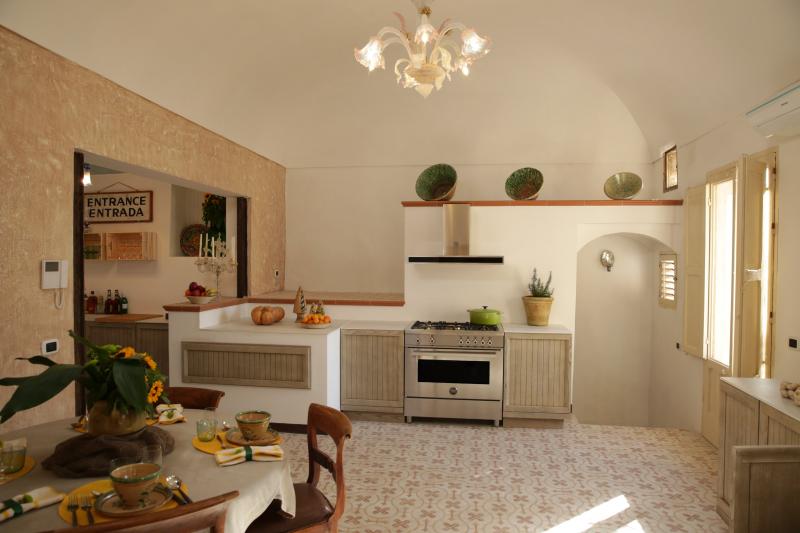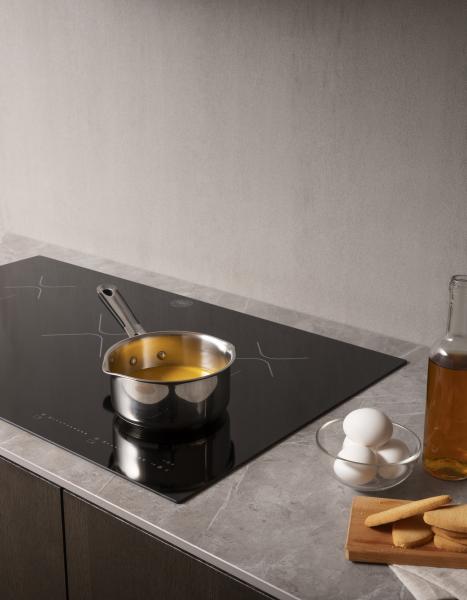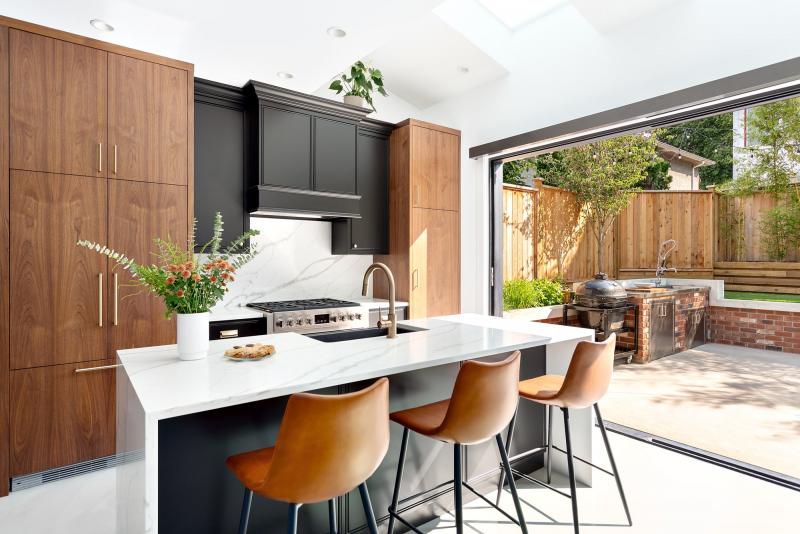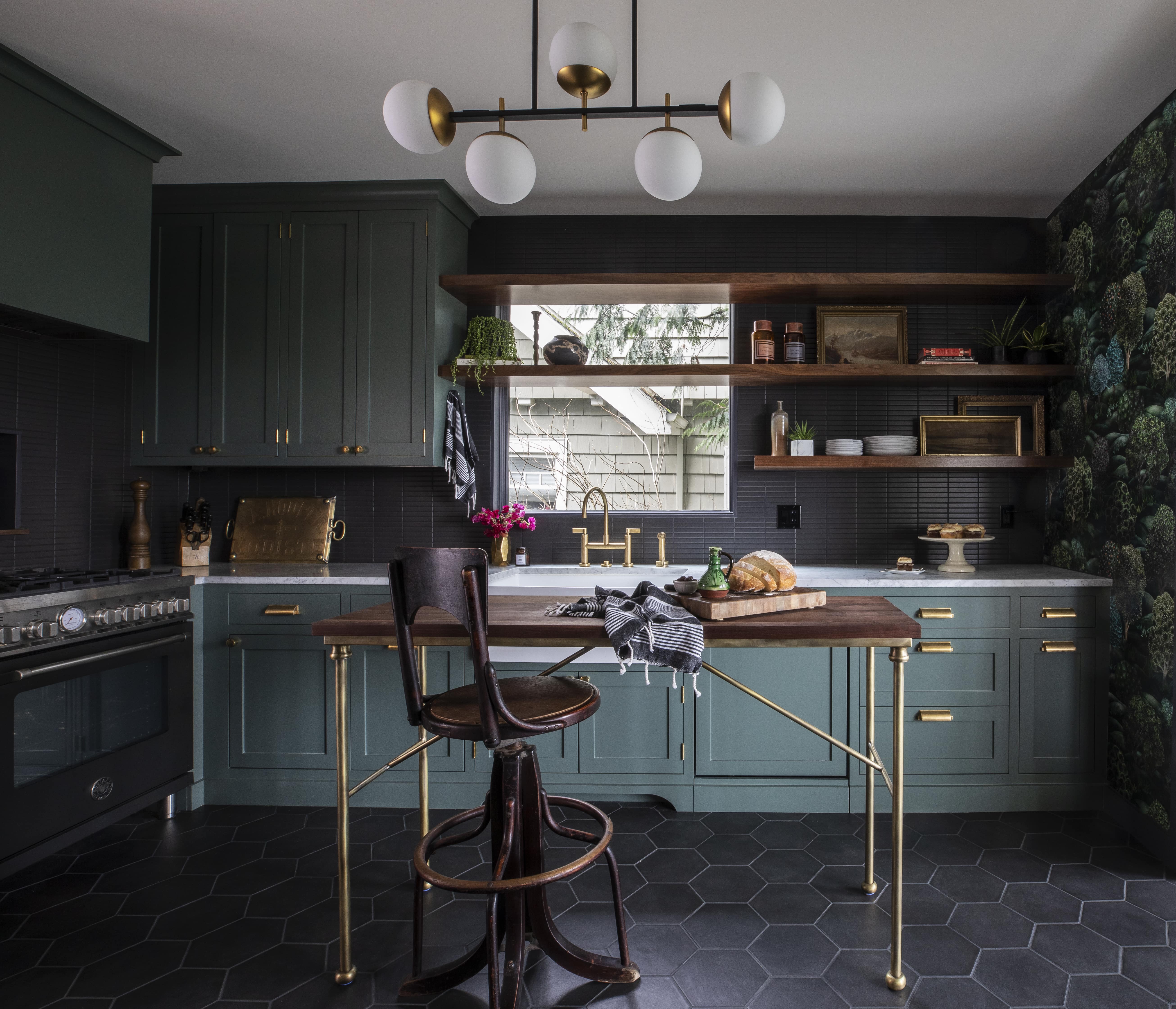Europe continues to be the bellwether of kitchen design trends, and staying up to date on what’s going on across the pond provides a glimpse into the future of kitchen design in North America.
European kitchens are known as highly functional with refined design; the current standard includes smaller paneled appliances that blend into handle-less slab cabinetry and surfaces. Their kitchens are much smaller than the average American kitchen since the homes are more compact, resulting in space-saving appliance and design innovations.
But in response to COVID-19, the concept and functionality of the kitchen shifted in the U.S. It became a classroom, restaurant, office, and family zone far more so than a year ago.
Of course, the same needs and desires altered kitchen design in Europe.
“People being locked down and confined to their homes has certainly put a lot more emphasis on preparing meals,” says Michael Rockstroh, who oversees U.S. operations for Italian kitchen brand Bertazzoni. “The food delivery services and meal delivery services from restaurants such as Postmates, UberEats, is not quite as developed in Europe yet, so there was even more dependency on preparing meals at home. Being in the kitchen definitely became equally centric to life in Europe as it has been here in the U.S.”
For the past decade, European kitchen design has been evolving to become an extension of other areas of the home, such as the living room, says Rockstroh. As a result, those design innovations allowed families to fare better in the pandemic whereas Americans were more or less forced to reckon with the functional downfalls of their more traditional kitchens.
[ Read More: WHAT HOMEOWNERS WANT FROM THEIR KITCHENS IN 2021 ]

Photo: Lorraine Bracco
Not Just Function
Colors and materials used widely in Europe are also permeating the American kitchen industry—another impact from the pandemic.
The National Kitchen and Bath Association (NKBA) found natural/organic home design to be a big design style for the next few years in its 2021 Design Trends report. This style was never mentioned in previous reports by the NKBA, and its sudden rise in popularity has been attributed to homeowners wanting to bring calming, wellness-focused design into their homes—a ripple effect of the pandemic’s uncertainty and impact on health.
This trend mimics the minimalist Scandinavian style with earthy elements such as natural wood. But in Europe, Stephen Polloni, president of The Vetta Group, which represents Italian brand Fulgor Milano in North America, says that while natural woods such as oak remain popular, there’s a growing trend in appliances for black finishes.
[ Read More: 5 NEW CUTTING-EDGE LIGHTING PRODUCTS FROM EUROPE ]

Photo: Bertazzoni
“The trend over the last year or so has been an introduction of black stainless, but matte black appliances have become very popular,” he says, and not just the door but on the control panel knobs and all surfaces of the appliance.
Americans, meanwhile, want better, more functional appliances than before, resulting in an explosion of sales. Unfortunately, appliances are in short supply (and their prices spiking), thanks to supply chain issues and exploding demand.
With that, many U.S. consumers are looking to European brands to find the design-conscious, highly capable appliances homeowners desire, says Polloni. He notes that Americans are not only interested in more functional appliances, but are willing to up their budgets for them as well.
What’s Happening Now
In America, there’s increasing interest in induction cooktops, steam ovens, sous vide, and units that offer “all-in-one” functions. Such “all-in-one” cooking appliances have been standard in Europe due to their smaller kitchen footprints.
Demand for induction cooktops also grew quickly in Europe over a short amount of time because countries began phasing out natural gas as a fuel source. The same trend is starting to take hold in the U.S., with cities such as San Francisco and Seattle banning natural gas and propane for new homes. Sustainability and eco-friendly products are another growing interest of American buyers, according to John Burns Real Estate Consulting, so induction cooktops are poised for growth, and Rockstroh anticipates a rapid rise in their demand and use.
Sous vide and steam-assist ovens also are popular in Europe and gaining traction in North America now as new functions for ranges or separate appliances. Monogram’s new X-Series wall ovens and Statement steam ovens debuted this year, while Sharp also released a microwave drawer with steam, toast, bake, and air fry functions and its SuperSteam+ Superheated steam and convection wall oven, this year.
[ Read More: 7 EUROPEAN KITCHEN, BATH INTRODUCTIONS THAT CAUGHT OUR EYES THIS SPRING ]

Photo: Madeleine Design Group
“Sous vide cooking used to be, until about 10 years ago or so, something for the pure enthusiast,” says Rockstroh. “Its origins in the European kitchen, that slow, low-temperature cooking, and then all of a sudden there was this emergence of smart technology in sous vide, lowering the intimidation hurdle, lowering the entry price level, and all of a sudden, particularly with Millennials, sous vide cooking enjoyed some major popularity.”
Still, steam-assist is not the most popular cooking method in Europe, but it’s something to watch. And while European trends trickle into the North American market, American design has been growing in Europe, notes Rockstroh, such as the desire for larger refrigerators.
Still, and as it has been historically, both European forms and functions are not yet widespread domestically, and typically start at the high-end of the market. That is until mainstream manufacturers catch on and design their products to satisfy growing demand at lower price points.
“We realize that both markets have their traditions,” says Rockstroh. “Both markets have their strengths, and there’s this symbiotic reciprocity we see between the markets where there’s a lot of cross-pollination, and that keeps on driving the space.”







